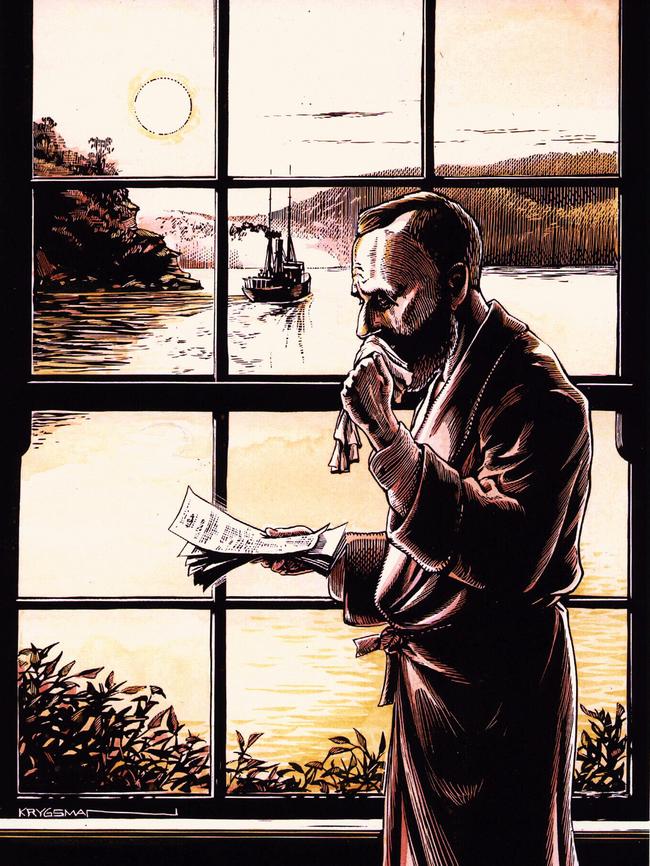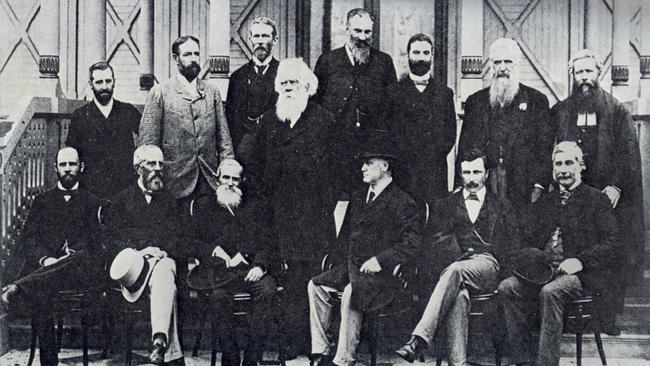Talking Point: Unveil the electorate of Clark now
BOB HOLDERNESS-RODDAM: Denison should be renamed in honour of the 19th century Tasmanian judge who drafted most of the Constitution.
Opinion
Don't miss out on the headlines from Opinion. Followed categories will be added to My News.
UNTIL quite recently, Andrew Inglis Clark was little known for his considerable contribution to the cultural, legal and political life of Tasmania and Australia.
Many Tasmanians will recognise Clark for introducing the electoral system we know as Hare-Clark for elections in the House of Assembly.
However, Clark should also be recognised as being the most effective attorney-general for any of the colonies in pre-federation Australia, and as a driving force for the establishment of the University of Tasmania.
But wait, that’s not all.
Andrew Inglis Clark wrote the draft of what became the Australian Constitution, and over 90 per cent of Clark’s draft is incorporated in the Constitution.
MORE: DRIVE TO DUMP DENISON NAME IN FAVOUR OF INGLIS CLARK
The Newspapers in Education section of this paper carried a story, “Youthful energy in push for Federation” (Mercury, July 1999) in which a photograph accompanying the article was captioned: “The three lawyers responsible for the drafting of the Australian Constitution: left, Sir John Downer, Edmund Barton and Richard Edward O’Connor”.


Clark was not mentioned, yet played the key role drafting the Australian Constitution. While most of those involved in formulation of the Australian Constitution have been recognised by having a federal electorate, and/or a suburb in the ACT named after them, Clark has received no such recognition.
This lack of recognition for Clark is lamentable and a national disgrace. We must rename the electorate of Denison for Clark. Nothing less will do, and an opportunity for this is about to present itself.
The Australian Electoral Commission will soon be advertising for submissions regarding the redistribution of the electoral boundaries for the federal electoral divisions in Tasmania.
Redistributions in each state and territory are scheduled to be held every seven years.
The last redistribution for Tasmania was held in 2008.
However, the distribution scheduled for 2015 was deferred until after the recent Federal Election.
According to the AEC website, this redistribution is to start within 30 days of the first meeting of the new House of Representatives, which returned on August 30, and it allows for submissions regarding the change of electorate names.

So exactly what role did Andrew Inglis Clark play in the formulation of Australia’s Constitution?
He wrote the draft which was largely adopted by the constitutional committees, starting on March 26, 1891. This included the Easter trip on the Queensland Government’s yacht, Lucinda, on Broken Bay in the estuary of the Hawkesbury River on March 28. Unfortunately, Clark was sick on that day and unable to participate in the deliberations on the Lucinda.
Although the role played by Clark in developing the Australian Constitution has received belated recognition, the research by scholars such as J. Reynolds, J.A. La Nauze and F.M. Neasey clearly demonstrates Clark played a pivotal role in its development.
This was largely through his interest in, and extensive knowledge of, the Constitutions of the USA and Canada. In 1890 Clark had returned from a trip to London via Boston, in the US, where he had met constitutional experts including Oliver Wendell Holmes Jr and Moncure Conway.
Peter Botsman, in his 2000 book The Great Constitutional Swindle: A Citizen’s View of the Australian Constitution showed clearly that more than 90 per cent of Clark’s 1891 Bill for Federation is included in the current Australian Constitution.
Even those who oppose the adoption of Clark in lieu of Denison for the electorate name have to concede that Clark played a significant role at state and national level. He gave us our Federal Constitution and a raft of reforming legislation while serving as Tasmania’s attorney-general, including arguably the best electoral system, as used for Tasmania’s House of Assembly.
While serving as a Tasmanian Supreme Court judge he made decisions which are still cited in the modern High Court, and played a lead role in the establishment of the University of Tasmania.
Not bad for the son of Scottish immigrant parents, whose health as a child was so poor his mother home-educated him until his high school years.

Professor John La Nauze states in his 1972 book, The Making of the Australian Constitution, that “though the Constitution was formally the child of the Conventions, the ‘framers’ in these respects were not the 84 delegates of 1891 and 1897-1898 but Clark, Griffith, Barton, O’Connor, Isaacs, Higgins, Symon and a few others.”
Four of these — Barton, Griffith, Higgins and Isaacs are commemorated in electorate names.
The West Australian seat of O’Connor is named for Charles O’Connor 1843-1902, who was appointed WA Engineer in Chief in 1891, not Richard Edward O’Connor. However, R.E. O’Connor has a Canberra suburb named in his honour. Symon is recognised in the Canberra suburb of Symonston.
There are two precedents for renaming Tasmanian electorates. The electorate of Braddon was formerly known as Darwin. It was renamed in 1955 in honour of Sir Edward Braddon, one of the leaders of the Federation movement in Tasmania, a former member of the Tasmanian Parliament and also member of the first House of Representatives.
Similarly, the electorate we know as Lyons was renamed from Wilmot in 1984 in honour of Joe Lyons, Premier of Tasmania from 1923 to 1928 and prime minister from 1932 to 1939, as well as his wife, Dame Enid Lyons, who served in the House of Representative from 1943 to 1951, and was the first woman to reach cabinet rank, serving in the Menzies Cabinet from 1949 to 1951.
For those who would like to learn more about Clark, there is an entry by Professor Henry Reynolds in the online edition of the Australian Dictionary of Biography. Prof Reynolds was possibly the first to suggest changing the name of Denison (Mercury, August 27, 1984).
More recently, the then federal member for Denison, Duncan Kerr, made the same suggestion, as has Tasmanian historian and Hobart teacher Peter D. Jones.
Bob Holderness-Roddam developed and conducted several workshops on understanding the Hare-Clark electoral system for Adult Education.


